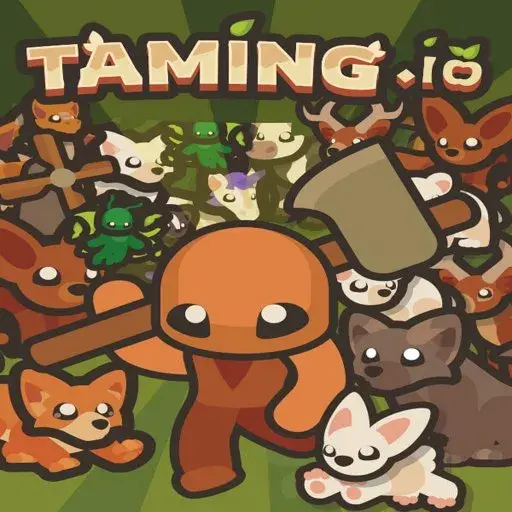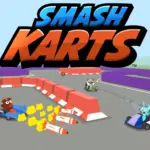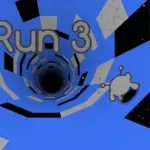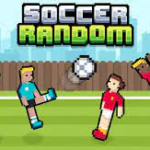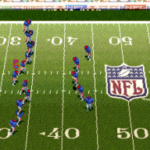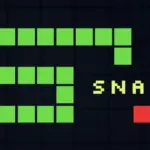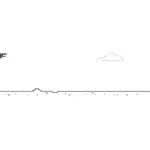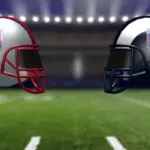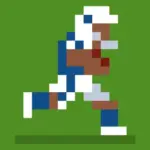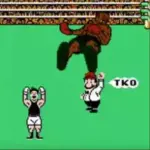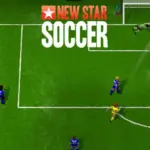In the world of sports manga, few series have captured the hearts of readers quite like Slam Dunk. Created by Takehiko Inoue, this basketball-centric masterpiece has become a cultural phenomenon, inspiring countless fans and aspiring athletes alike. At the core of Slam Dunk’s enduring appeal are the intense rivalries that drive its thrilling matches, creating a tapestry of competition, growth, and passion that resonates with readers long after they’ve turned the final page.
The Heart of Competition: Shohoku vs. Ryonan
Perhaps no rivalry in Slam Dunk Manga is as iconic as the fierce competition between Shohoku High School and Ryonan High School. This matchup serves as a crucible for the series’ protagonists, pushing them to their limits and beyond.
Sakuragi vs. Sendoh: A Clash of Raw Talent and Refined Skill
At the center of this rivalry is the electrifying confrontation between Shohoku’s unpredictable power forward, Hanamichi Sakuragi, and Ryonan’s ace, Akira Sendoh. Sakuragi, a basketball novice with incredible athletic potential, finds himself pitted against Sendoh, a prodigy with polished skills and strategic acumen. Their encounters on the court are a masterclass in character development, showcasing Sakuragi’s rapid growth and Sendoh’s ability to adapt to any challenge.
The dynamic between these two players encapsulates the essence of Slam Dunk’s approach to rivalries. It’s not just about winning or losing; it’s about the journey of self-discovery and improvement that comes through facing a worthy opponent. Each time Sakuragi and Sendoh face off, readers are treated to a visual spectacle of high-flying dunks, clever passes, and moments of pure basketball brilliance that have become hallmarks of the series.
Team Dynamics: More Than Individual Battles
While individual matchups like Sakuragi vs. Sendoh capture the imagination, Slam Dunk excels in portraying the team aspect of basketball. The rivalry between Shohoku and Ryonan extends to every player on the court, creating a complex web of interactions and strategies that keep readers on the edge of their seats.
From the calm leadership of Shohoku’s Takenori Akagi to the fiery determination of Ryonan’s Kicchou Fukuda, each player brings their unique strengths and weaknesses to the fore. This team-wide rivalry showcases the importance of cooperation, trust, and collective growth in achieving victory, themes that resonate deeply with manga fans and sports enthusiasts alike.
Internal Strife: The Rukawa-Sakuragi Rivalry
Not all rivalries in Slam Dunk are between opposing teams. One of the most compelling dynamics in the series is the internal rivalry between Shohoku teammates Kaede Rukawa and Hanamichi Sakuragi. This contentious relationship serves as a driving force for both characters’ development and adds layers of complexity to Shohoku’s team dynamics.
Contrasting Styles, Shared Passion
Rukawa, the cool and talented freshman with professional aspirations, stands in stark contrast to Sakuragi’s brash and inexperienced approach to the game. Their rivalry is fueled not just by their different playing styles but also by their competing personalities and their mutual interest in their classmate, Haruko Akagi.
What makes this rivalry particularly engaging is how it evolves over the course of the series. Initially marked by hostility and one-upmanship, the Rukawa-Sakuragi dynamic gradually transforms into a grudging respect and an unspoken partnership that becomes crucial to Shohoku’s success. This evolution mirrors the growth of both characters, with Sakuragi learning to channel his raw talent into effective play and Rukawa discovering the value of teamwork.
The National Stage: Shohoku vs. Sannoh
As Slam Dunk progresses, the scale of its rivalries expands, culminating in the epic showdown between Shohoku and Sannoh Kogyo, the reigning national champions. This matchup represents the pinnacle of high school basketball in the slamdunk.top universe and serves as the ultimate test for our protagonists.
David vs. Goliath: Underdogs on the Big Stage
The Shohoku-Sannoh rivalry embodies the classic underdog story, with Shohoku entering the national tournament as relative unknowns facing off against the seemingly invincible champions. This setup allows Inoue to explore themes of perseverance, the power of belief, and the unpredictable nature of sports.
What makes this rivalry particularly compelling is how it brings together all the skills, experiences, and growth that Shohoku’s players have accumulated throughout their previous matches. Every member of the team, from Sakuragi’s newfound rebounding prowess to Rukawa’s refined offensive skills, plays a crucial role in challenging Sannoh’s dominance.
Individual Battles Within the War
Within the larger context of the Shohoku-Sannoh rivalry, several individual matchups stand out, each adding depth and excitement to the overall narrative:
- Akagi vs. Kawata: A battle of centers that tests Akagi’s leadership and resilience.
- Rukawa vs. Sawakita: A showdown between two of the most talented players in the tournament, pushing both to their limits.
- Sakuragi vs. Expectations: While not a direct player matchup, Sakuragi’s struggle against his own limitations and the pressure of the national stage provides some of the most emotionally resonant moments in the series.
These individual rivalries within the larger team conflict showcase Inoue’s skill in weaving complex narratives that engage readers on multiple levels, from the personal to the collective.
Beyond the Court: Rivalries That Shape Characters
While the on-court action is undoubtedly the heart of Slam Dunk, the series’ exploration of rivalries extends beyond basketball games, delving into the personal lives and motivations of its characters.
Mitsui’s Redemption Arc
One of the most poignant storylines in Slam Dunk revolves around Hisashi Mitsui, a former MVP who turns to delinquency after an injury derails his basketball career. Mitsui’s rivalry is not with another player but with his past self and the expectations placed upon him. His journey back to basketball, marked by conflicts with both teammates and former delinquent associates, adds a layer of depth to the series’ exploration of rivalry and redemption.
Coaches’ Strategic Battles
The rivalries in Slam Dunk aren’t limited to the players on the court. The strategic duels between coaches, particularly Shohoku’s Anzai and Ryonan’s Taoka, provide a cerebral counterpoint to the physical battles of their teams. These coaching rivalries highlight the tactical aspects of basketball and demonstrate how leadership and strategy can be just as crucial as individual talent in achieving victory.
The Legacy of Slam Dunk’s Rivalries
The impact of Slam Dunk’s portrayal of rivalries extends far beyond the pages of the manga. The series has inspired countless readers to take up basketball, fostering a love for the sport in Japan and beyond. The rivalries depicted in Slam Dunk have become a blueprint for sports manga and anime, influencing how competitive relationships are portrayed in media across genres.
Cultural Impact and Fan Engagement
The rivalries in Slam Dunk have sparked endless debates among fans, from discussions about which player is truly the best to arguments over the most memorable matches. This engagement has helped create a vibrant fan community that continues to celebrate the series decades after its conclusion.
Fan art, cosplay, and even real-life basketball tournaments inspired by the series are testaments to the enduring appeal of Slam Dunk’s rivalries. The characters and their competitive relationships have become cultural touchstones, referenced and celebrated in ways that go far beyond typical manga fandom.
Inspiring Real-World Athletes
Perhaps the most significant legacy of Slam Dunk’s rivalries is their impact on real-world athletes. Many professional basketball players, both in Japan and internationally, have cited the series as a source of inspiration, with some even recreating iconic moves from the manga on actual basketball courts. This blurring of lines between fiction and reality speaks to the authenticity and power of the rivalries portrayed in Slam Dunk.
Conclusion: The Enduring Power of Rivalry
The rivalries that define Slam Dunk’s exciting matches are more than just plot devices; they are the beating heart of a series that has captivated readers for generations. Through these competitive relationships, Takehiko Inoue explores themes of growth, perseverance, and the pursuit of excellence, creating a narrative that resonates far beyond the world of basketball.
From the intense on-court battles between Shohoku and Ryonan to the internal struggles of characters like Sakuragi and Rukawa, Slam Dunk’s rivalries offer a rich tapestry of human drama and sporting excitement. They challenge characters to push beyond their limits, confront their weaknesses, and ultimately discover the best versions of themselves.
As we reflect on the impact of these rivalries, it’s clear that their power lies not just in the thrill of competition but in their ability to inspire and motivate. Slam Dunk reminds us that our greatest rivals can also be our greatest teachers, pushing us to heights we never thought possible.
For manga fans and sports enthusiasts alike, the rivalries of Slam Dunk remain a source of excitement, inspiration, and joy. They invite us to consider our own competitive relationships and how they shape our personal growth and achievements.
We’d love to hear from you: How have the rivalries in Slam Dunk influenced your own approach to competition or personal growth? Share your experiences and thoughts in the comments below, and let’s continue to celebrate the enduring legacy of this incredible manga series.
